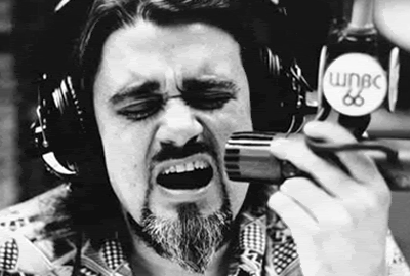The new issue of Huck (with Ben Harper on the cover) is out now. If you don't know Huck, it's done by a lot of the guys that contributed to Adrenalin (R.I.P) like Vince Medeiros, Jamie Brisick, Phil Hebblethwaite, Michael Fordham, Jay Riggio and Zoe Oksanen – all top writers in their fields of surfing, skating, snowboarding and music. So it's a pleasure to get my words in this issue with a few more stories to come on Surfing in Holland and OT301: Amsterdam's former squat turned arts centre. Anyway, here is my story with Karin of Fever Ray.
Fever Ray Tour 2009 from Fever Ray on Vimeo.
"I started from where I ended with The Knife." States Karin Dreijer Andersson, vocalist and one half of the Swedish brother/sister electro outfit The Knife, whose record Silent Shout was named the best album of 2006 by indie-elitists Pitchforkmedia.
"We were very definite about us having a break. We had been sitting in each other's laps for seven years so we both needed the time off."
So while brother Olof was on a field-recording trek to the Amazon, documenting the sounds of the jungle for the soundtrack to an opera about Charles Darwin The Knife had been commissioned to produce, Karin found herself back in the studio.
"I didn't know it was going to be an album," she says of solo project, Fever Ray. "I just wanted to work with some ideas I had been collecting. I did not have an overall sound in mind but I did have an overall idea of the tempo; slower, thicker."
Through the collected ideas and the minutiae, Fever Ray took shape, contemplative in its direction and certain of its evocation. Where The Knife bubbles with popping techno, Fever Ray stews like a primordial ooze, brooding through thick, droning, almost trip-hop tempos. And while The Knife stabs with sharp beats, Fever Ray weeps through unique timbres, building from trembling and fragile into strong, vengeful haunts. Karin's distinctive voice, like a siren, enchants the listener into an unknown world full of mossy darkness and decay.
"I have my own studio just south of Stockholm where I have mostly keyboard, computer and guitar and I've also got a new voice machine. I have been listening to a lot of Tomahawk and their Anonymous album inspired by Native Americans. It's very primal, making beats out of vocals."
Immediately you can hear that influence, via her new voice machine, on opening track and first single "If I Had A Heart" as well as "Concrete Walls", her voice alters and drop to looming chants over slow, prowling trance, creating an ominous tension.
She admits the album is intense, and that even she'd need a break from its heavy themes. However, "in [my] melodies you can find a lot more romantic aspects from the '80s like Alphaville which I listened to a lot a long time ago." She says with a guilty, kiddish grin. Certainly there's more than a touch of the new wave, synth-pop from "Forever Young" and "A Victory of Love" in songs like "Seven" and "Dry and Dusty".
Recorded after giving birth to her second child, inspiration inconveniently struck in those child-rearing, sleepless hours where the conscious and subconscious, the REM and restlessness, all dance.
"I think it's interesting to capture the moment while in that state of mind. It's not like you have an alternative - it's what's there. I don't sit and wait for inspiration. I definitely think you can write out of that perspective or state.
"Half of what the songs are about is the subconscious," she states in her bio. "Ideas of things happening. A lot of it is like daydreaming, dreaming when you’re awake, but tired; a lot of stories come from that world." As a result her lyrics are often cryptic, walking a thin line between mixed metaphors and just-decipherable details. It's no surprise she finds stimulus in the dream-like films of David Lynch.
Helping to bring a surreal cinematic feel to the Fever Ray project is Andreas Nilsson, who has collaborated with The Knife over the years on videos, live performances and DVDs. The video to "If I Had a Heart" is a voodoo trip down a bayou, spot lit with horror creeping in from the darkness.
"I've known Andreas for a very long time, even before The Knife," says Karin. "We have quite similar musical references but he also has his own interpretations of what we are doing, which I think is great."
The two have also collaborated on the visuals for Fever Ray's live shows, to be "five people on stage including myself playing different things," says Karin. "I think what makes sense to do live is percussion and some more noise elements. At first I was thinking about playing to a standing audience but now I'm thinking maybe it would be good to sit down and listen to it."
Whether live or recorded, immersing yourself into the muck and the mire of Fever Ray, seduced by Karin's vocals, pure or layered, mixed with the thick primordial tempo and foggy darkness you'll find there's a lot to unearth.
Fever Ray
Fever Ray myspace
Fall Out Boy for Kerrang!
10 years ago


